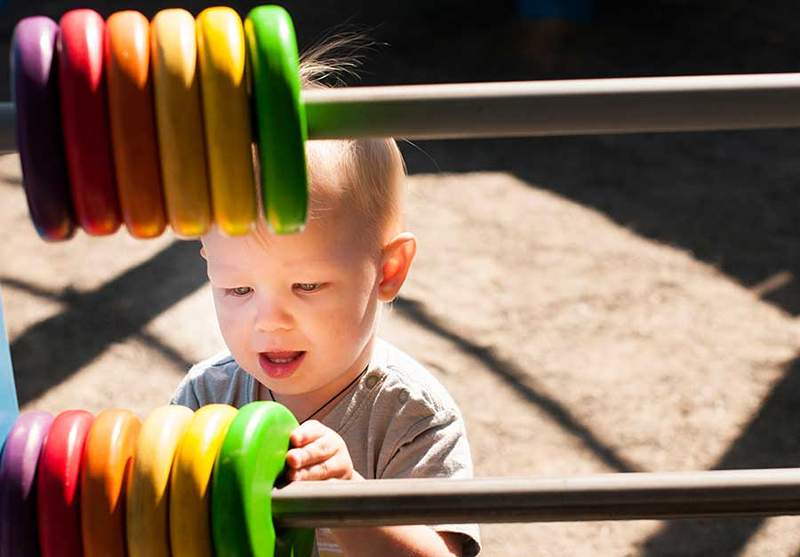Cognitive development in childhood language and emotions

- 4391
- 277
- Hugh Greenholt
Children can communicate a long time before they are able to use spoken words. The search reflex indicates the ability to breastfeed and eat. Different types of crying indicate discomfort, pain or fatigue. Non -verbal body language includes postures, facial expressions, relaxation or muscle tension, movement, tears, perspiration, tremors or shocking. Alert parents learn to interpret these body signs and give them the right meaning.
Therefore, language represents only one of the communication methods, although it is the most important, since it allows human beings to exchange information, ideas, attitudes and emotions.
After all, with thousands of words language is an efficient means for one to communicate to others an unlimited amount of information, thoughts, ideas and feelings.
Content
Toggle- ELEMENTS AND RULES OF LANGUAGE
- Theories about language development
- Yo. Biological theory
- II: Learning Theory
- III. Cognitive theory
- IV. Interactionist theory
- Language development sequences
- Pre -linguistic period
- The first words spoken
- Two words emissions
- Telegraphic speech
- Prayers
- Emotional development
- The attachment
- Confidence and security development
- Requirements for the development of trust and safety in children
- Some causes of distrust and insecurity
- Differences in temperament
- Personality and temperament
- Temperament components and patterns
- Development of self, autonomy, self -concept and self -esteem
ELEMENTS AND RULES OF LANGUAGE
To fulfill its functions, language contains a finite set of elements that are used according to a set of rules. Among the basic elements of language are phonemes, morphemes, syntax and grammar, semantics and pragmatics.
- Phonemes: The lower unit of sound in a language.
- Morphemes: The lower unit with linguistic meaning.
- Syntax: The grammatical rules of a language.
- Semantics: The meaning of words and prayers.
- Pragmatics: The practical use of language to communicate with others in various social contexts.
Theories about language development
Yo. Biological theory
Biological theory (known as a nativist approach) says that the child inherits the predisposition to learn language at a certain age.
II: Learning Theory
Learning theory suggests that language is acquired as any other behavior, for imitation, conditioning, association and reinforcement.
III. Cognitive theory
Cognitive theory underlines the idea that language develops from mental images, that is, it is a direct result of cognitive development. Piaget (1926) said that children form a mental scheme to which linguistic labels then apply.
IV. Interactionist theory
Interactionist theory highlights the similar importance of biological maturation and the role of environmental influences and language development experience.

 Emotional fragility, what is and how to face it
Emotional fragility, what is and how to face it Language development sequences
Pre -linguistic period
- Crullos: The first vocal emissions, made by infants.
- Babbling: Emissions of a syllable containing combinations of vowels and consonants.
The first words spoken
- Holofrases: Simple words used by infants to communicate different meanings.
Two words emissions
- Duos: Two words emissions.
Telegraphic speech
- Emissions of several words that lead to meaning.
Prayers
Of the 2 and a half at 4 years, children use sentences that contain several words (from 3 to 5 words), each with subject and predicate and few grammatical errors.
Emotional development
The attachment
Attachment is the feeling that unites the father and his son; It is the emotional bond that exists between them, the desire to keep in touch through physical closeness, touch, look, smile, listen or speak.
The formation of this attachment is of vital importance for the full development of children, as it provides them with security, allows the development of the meaning of self and makes its socialization possible. Children who manage to form that attachment are less shy and inhibited in their relationships with others; They can get better with other children, brothers, and other children outside the family. Children begin to identify, imitate and learn from people or those who feel closest, and it is for those contacts that learn what society expects from them; These relationships become the basis for personality training and character.
- Multiple attachments. Children can develop close attachments towards more than one person. The fact that children can form multiple attachments does not mean that people who are responsible for their care can change constantly. The important factor in attachment development is the total dialogue that takes place between parents and the child.
- Specific attachments. On average, it is not until 6 or 7 months that attachments are formed towards specific people. Before this age there is no disturbance in children because of the separations, it is an important one, such as hospitalization, or a minor, such as the fact that the mother leaves the room.
Confidence and security development
Erick Erikson suggested that the "cornerstone of a vital personality" is formed in childhood as the child interacts with parents or other people in charge of their care. This cornerstone is the basis of trust to the extent that infants learn that they can trust that the people who care for them will have to meet their subsistence, protection, well -being and affection needs. If these needs are not met, children become distrustful and insecure.
Requirements for the development of trust and safety in children
In order for trust and security to develop, it is necessary to meet a series of requirements:
- Receive adequate food. A chronically hungry child becomes an anxious child.
- Babies can suck enough.
- Receive caresses and physical contact.
Some causes of distrust and insecurity
- Paternal deprivation.
- Strain.
- Exposure to frightening experiences
- critics.
- Overprotection.
- Excessive indulgence.

 Child abuse, types of abuse and alarm signs
Child abuse, types of abuse and alarm signs Differences in temperament
Personality and temperament
Psychologists make a difference between personality and temperament. Personality is the total sum of the physical, mental, emotional and social characteristics of an individual.
Temperament refers to the basic, relatively consistent, inherent provisions, and that underlies and modulate much of the behavior.
Temperament components and patterns
Buss and plmen (1984) specified three traits as elements of temperament:
- Emotionality, which consists of the intensity of emotional reactions.
- The second feature is the activity, of which the main components are the rhythm and vigor.
- The third feature is sociability, which consists of the preference for being with others instead of alone.
Development of self, autonomy, self -concept and self -esteem
- Self -awareness. The development of self -awareness means that the child begins to understand their separation from other people and other things.
- Autonomy. Erikson states that the main psychosocial task to be met between the year and 2 years of age is the development of autonomy.
- Separation and individualization. Infants gradually develop a separate self from that of the mother. Infants still depend on the mother, but as they develop a greater physical and psychological separation, they need to achieve a balance between their dependence-dependence conflict while developing a sense of the self.
- Self -deficiency and self -concept. As children begin to develop a real awareness, they also begin to define themselves, to develop the concept of themselves, to develop an identity. For 3 years of age, personal characteristics are defined in childish terms and are usually positive and exaggerated. "I am the fastest corridor". For the middle of the elementary school, most children begin to develop a more realistic concept.
- Self -reference and self -efficacy. The self -reference has to do with ourselves and the estimate we make of our skills, how capable and effective we are to deal with others and the world. Self -efficacy is called the estimates we make of our effectiveness. It does not refer so much to our real skill and effectiveness to deal with situations and others, but to our perceptions of those things. Bandura (1986) suggested that the trial that children make of their personal efficacy arises from four main sources.
- First, self -efficacy depends on personal achievements and opinion that the child has of those achievements.
- Second, self -efficacy is derived in part of the comparison that the child makes of himself with others.
- Third, self -efficacy is also influenced by persuasion.
- Fourth, self -efficacy is influenced by the level of activation of the person.
- The self-esteem It is closely related to self -concept and self -efficacy. When children perceive their value, skills and achievements, do they have a positive or negative vision of themselves?, Everyone needs to feel loved, like others, accepted, valued, capable and competent. Self -esteem is the way children feel about themselves. There are four main sources of self -esteem: the child's emotional relationship with parents, their social competence, with classmates, their intellectual progress in school and the attitudes of society and the community towards them.
Ariel Delgado
- « The best images and phrases of short and cheerful happiness
- Interview with Karemi Rodríguez Batista, director of the Psycho-K portal »

